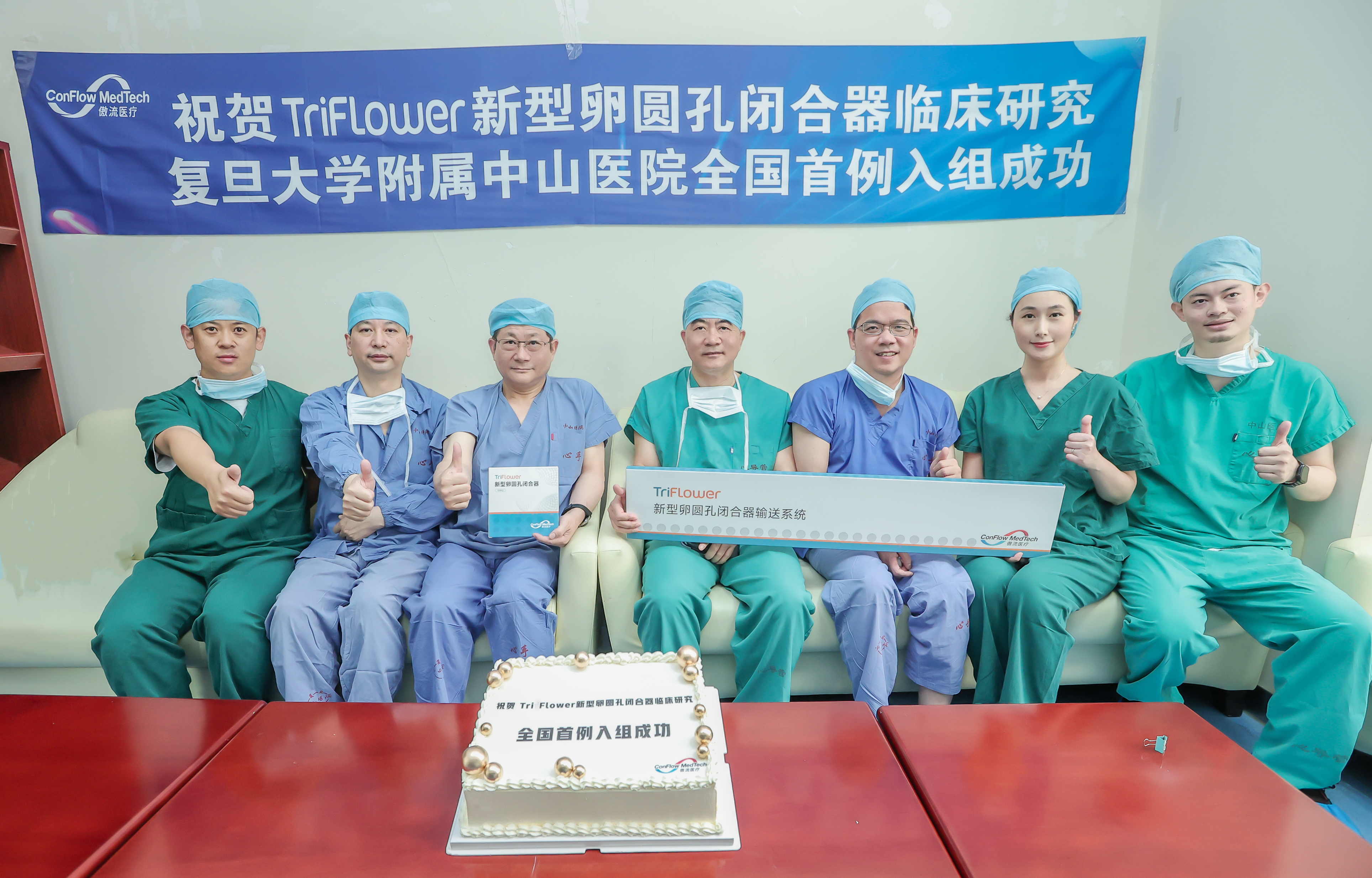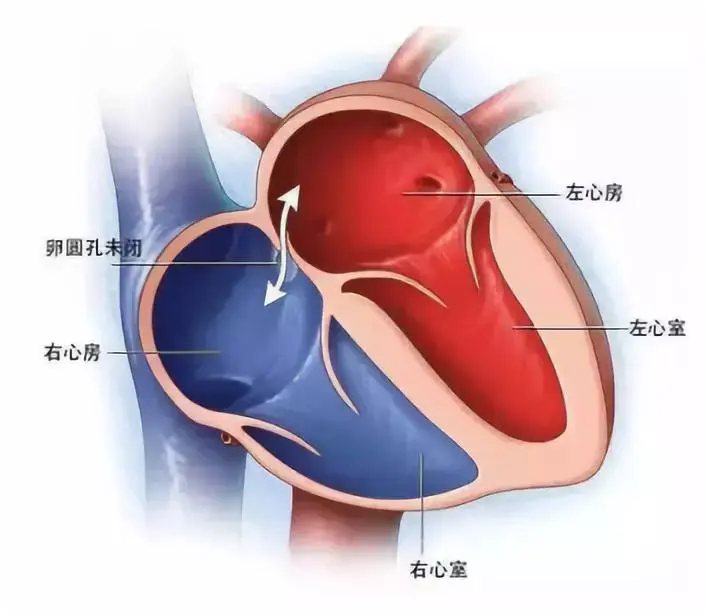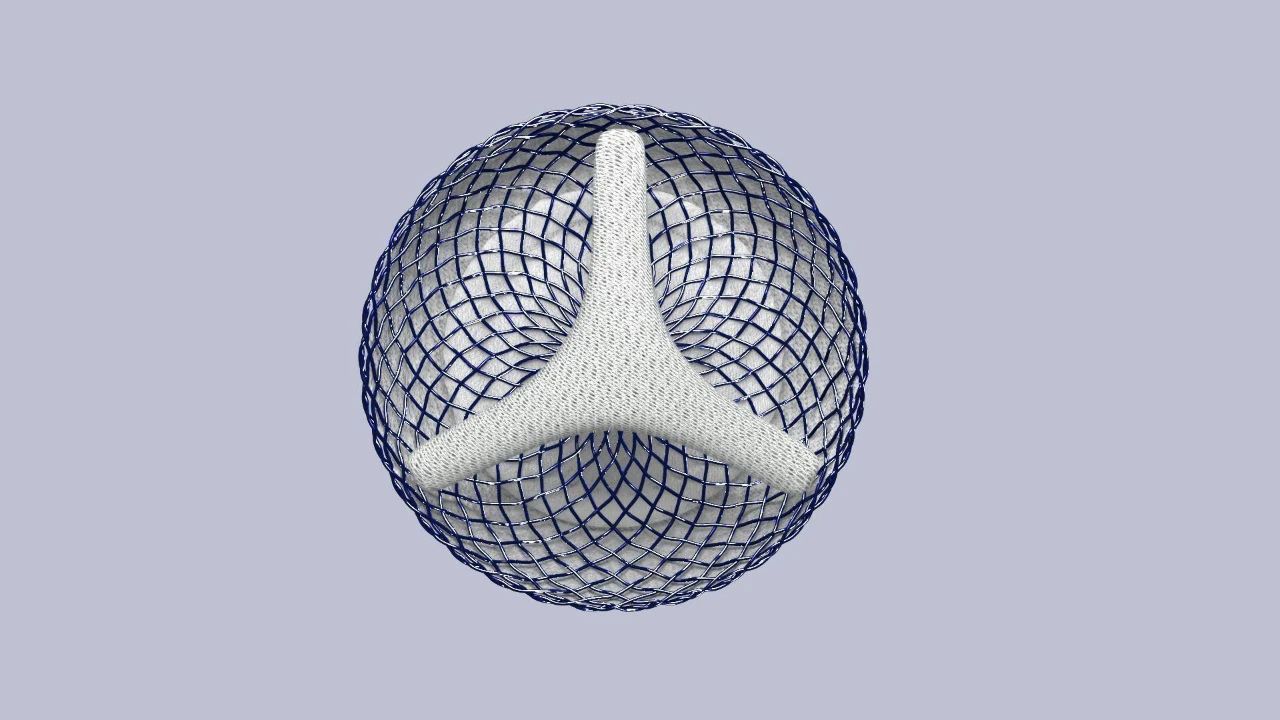The first clinical enrolment of TriFlower new type of foramen ovale obturator in China
On May 8, 2023, Academician Ge Junbo and the structural cardiology clinical teams at Zhongshan Hospital, affiliated to Fudan University,including Professor Zhou Daxin, Professor Pan Wenzhi, Zhang Xiaochun, Chen Haiyan, Li Wei, and Long Yuliang, achieved a significant milestone in the field of cardiology. They successfully conducted the inaugural clinical enrollment of TriFlower's innovative foramen ovale obturator, developed by ConFlow MedTech, in China. This groundbreaking procedure involved the closure and occlusion of a patent foramen ovale (PFO) in a patient. Postoperative ultrasound assessments revealed a remarkable improvement, with the patient's foramen ovale shunt reducing from preoperative levels to none. The patient recovered well and was discharged without any associated clinical complications on May 9th. This successful implantation underscores the safety, effectiveness, and procedural simplicity of TriFlower's novel foramen ovale obturator.

The foramen ovale is a natural fissure within the atrial septum, typically closing permanently after birth due to changes in pulmonary circulation. However, when it remains open beyond the age of 3, it is referred to as a patent foramen ovale (PFO). PFO can lead to serious health issues as it allows venous thrombi to enter the systemic circulation, potentially causing embolisms in the brain and leading to strokes. Clinically, PFO is associated with recurrent migraines, transient ischemic attacks, and systemic circulation embolisms. Research indicates a significant correlation between PFO and various cardiovascular and cerebrovascular conditions. Approximately 20% to 25% of adults have an incomplete patent foramen ovale.

Treatment options for symptomatic PFO patients include drug therapy, surgical procedures, and interventional closure therapy. PFO interventional closure, characterized by minimal invasiveness, absence of thoracotomy or extracorporeal circulation-related discomfort, fewer complications, and a high success rate, has gained widespread recognition and acceptance. The annual volume of PFO closure procedures in China is steadily increasing.
ConFlow MedTech's independently developed TriFlower novel foramen ovale obturator incorporates design principles from Professor Zhou Daxin, along with input from the structural heart disease team led by Academician Ge Junbo and other experts. The product design seamlessly integrates clinical prerequisites such as achieving a high closure rate for PFO implantation devices, minimizing the number of implants to prevent interference with subsequent atrial septal puncture procedures, and promoting swift endothelialization to mitigate thrombosis risks. This innovation presents a valuable new option for clinical patients seeking PFO closure.
Patient Profile & History
A 19-year-old female patient was admitted with complaints of dizziness, tinnitus, sudden loss of visual field, and the discovery of a patent foramen ovale (PFO). Brain MRI revealed recent cerebral infarction in the right occipital lobe and cerebellar hemisphere, as well as multiple lacunar infarctions near the right ventricle, accompanied by occlusion of the right posterior cerebral artery. Cardiac ultrasound confirmed the presence of a PFO.
Preoperative color Doppler echocardiography demonstrated a low-velocity left-to-right shunt at the atrial level following Valsalva maneuver stimulation.
Surgical Process
Academician Ge Junbo personally performed the implantation of a novel TriFlower foramen ovale obturator (refer to Figure 1 and Figure 2) on the patient. The procedure was conducted via femoral venipuncture, with the delivery system advanced through the patent foramen ovale (PFO) under the guidance of digital subtraction angiography (DSA). Once the left atrium had fully released the three clip arms, they were gently retracted to snugly fit against the left side of the PFO. Subsequently, the delivery sheath was further retracted to release the right disc surface, ensuring complete conformity of the sealing disc with the right side of the PFO. A traction test was then performed to observe the morphology and position of the obturator, while closely monitoring the patient's vital signs. The delivery cable was rotated to detach the TriFlower novel foramen ovale obturator, completing the implantation. DSA confirmed the appropriate position of the obturator with normal morphology and structure (no deformation or folding of the occluder disc or arms) (Figure 3)

Figure 1: Instrument examination

Figure 2: Instrument operation
Figure 3: Postoperative DSA
The surgical procedure was executed seamlessly, with straightforward instrument manipulation, resulting in a favorable surgical outcome. Postoperative ultrasound revealed complete closure of the patent foramen ovale (PFO) with no residual shunting. The successful execution of this operation signifies the commencement of the clinical trial phase for ConFlow MedTech's TriFlower novel foramen ovale obturator at the research center of Zhongshan Hospital affiliated to Fudan University. This achievement lays a robust foundation for forthcoming national multicenter registered clinical trials.
Product Features

-
The obturator's left atrial surface departs from the conventional disc-shaped structure and adopts a clamp arm design, significantly reducing the implant size and lowering the risk of device-related thrombosis.
-
The device features a unique design, employing smaller implants to minimize interference with subsequent atrial septal puncture procedures.
-
The product model is engineered with various specifications tailored to address complex patent foramen ovale (PFO) cases.
-
The product has submitted applications for four invention patents, four utility model patents (with two already authorized), one PCT international patent, and one design patent.
-
September 17,2021Celebrating its one-year milestone, ConFlow MedTech successfully concluded its first-anniversary event, joined by supporters and partners.
-
July 24,2023Good News | ConFlow MedTech was awarded as "Specialized and Sophisticated SME" in Shanghai City
-
September 18,2023Thank you for being with us as we celebrate the third anniversary of ConFlow MedTech's establishment!
Pursue further excellence!





